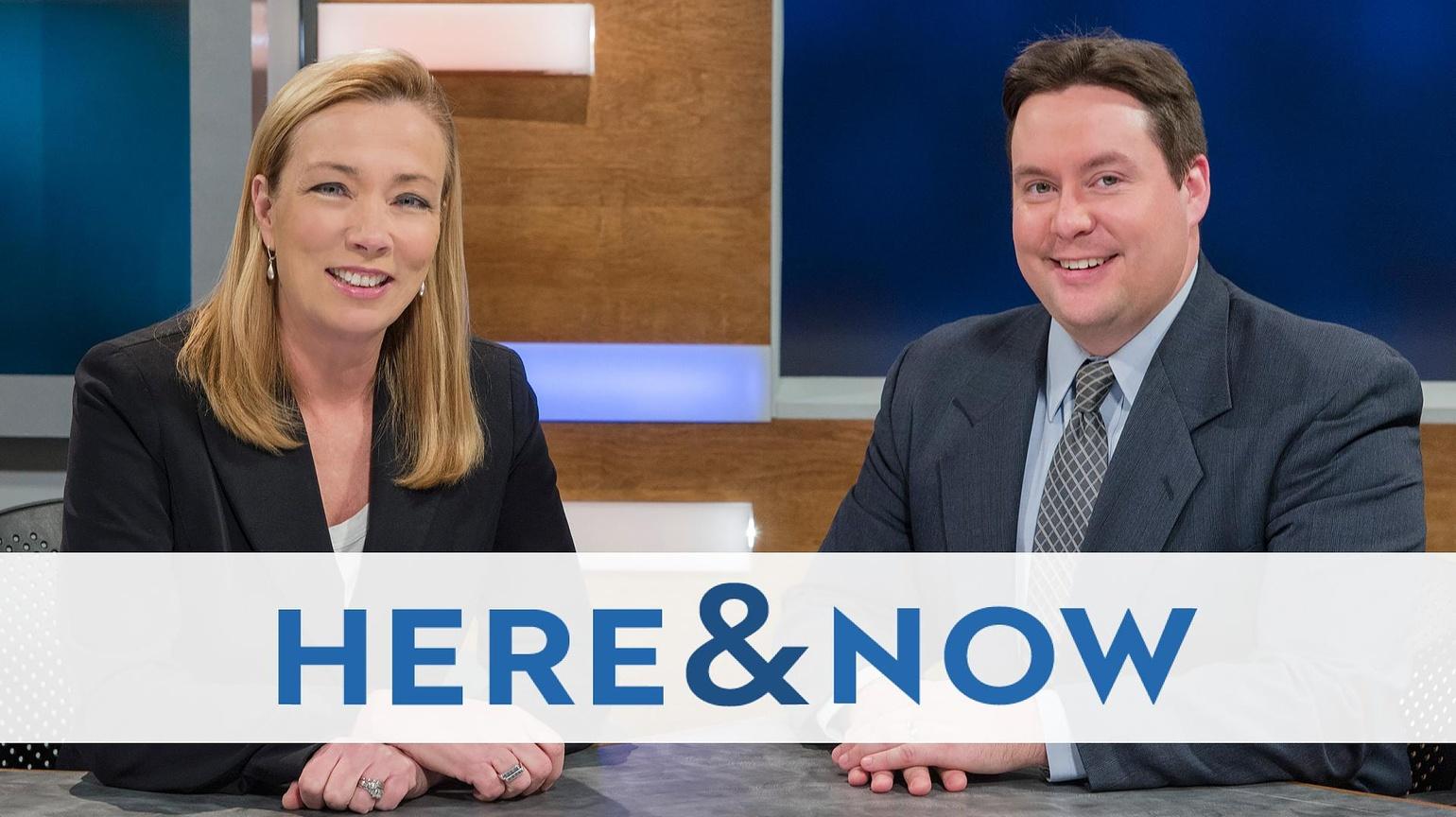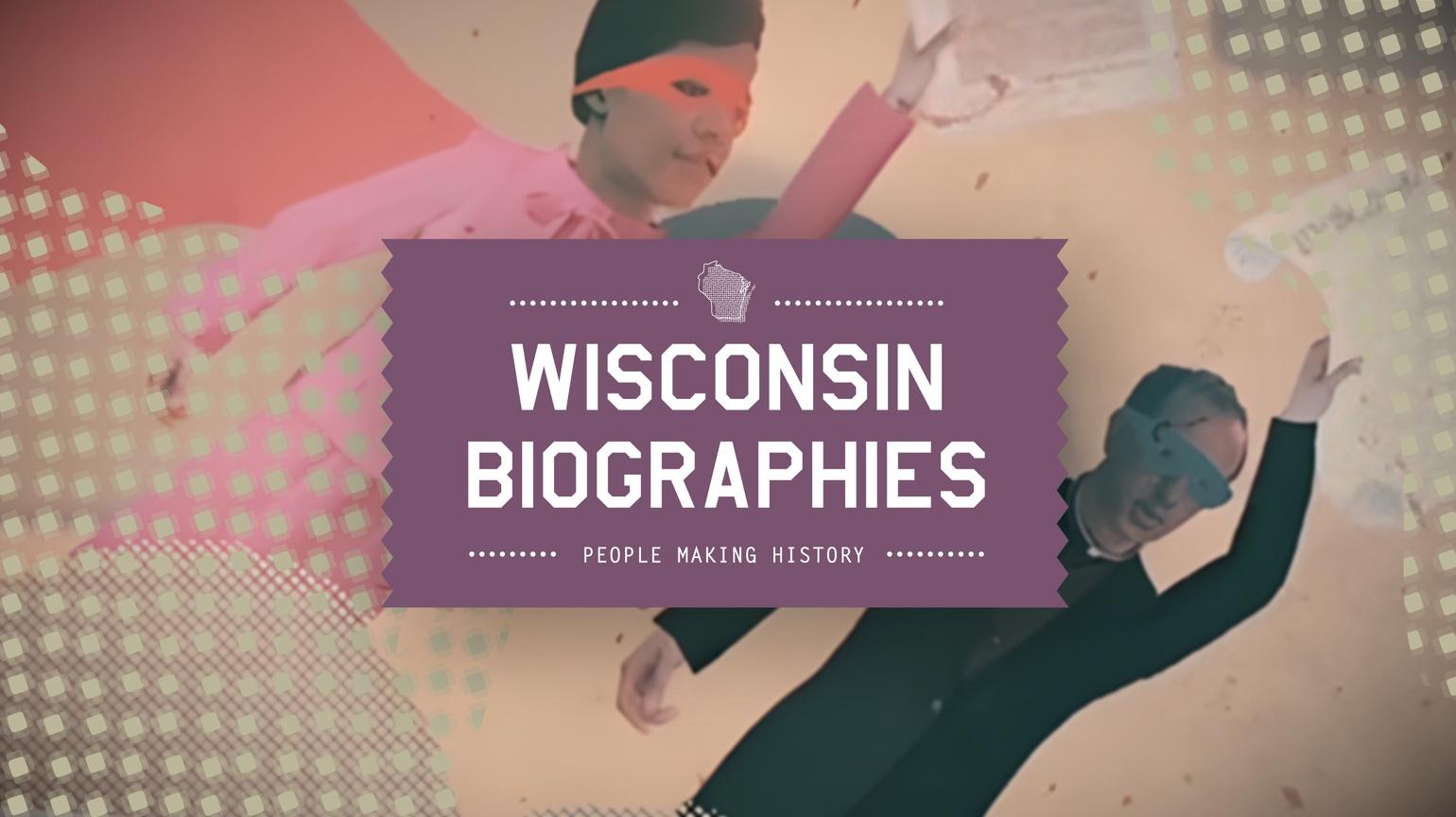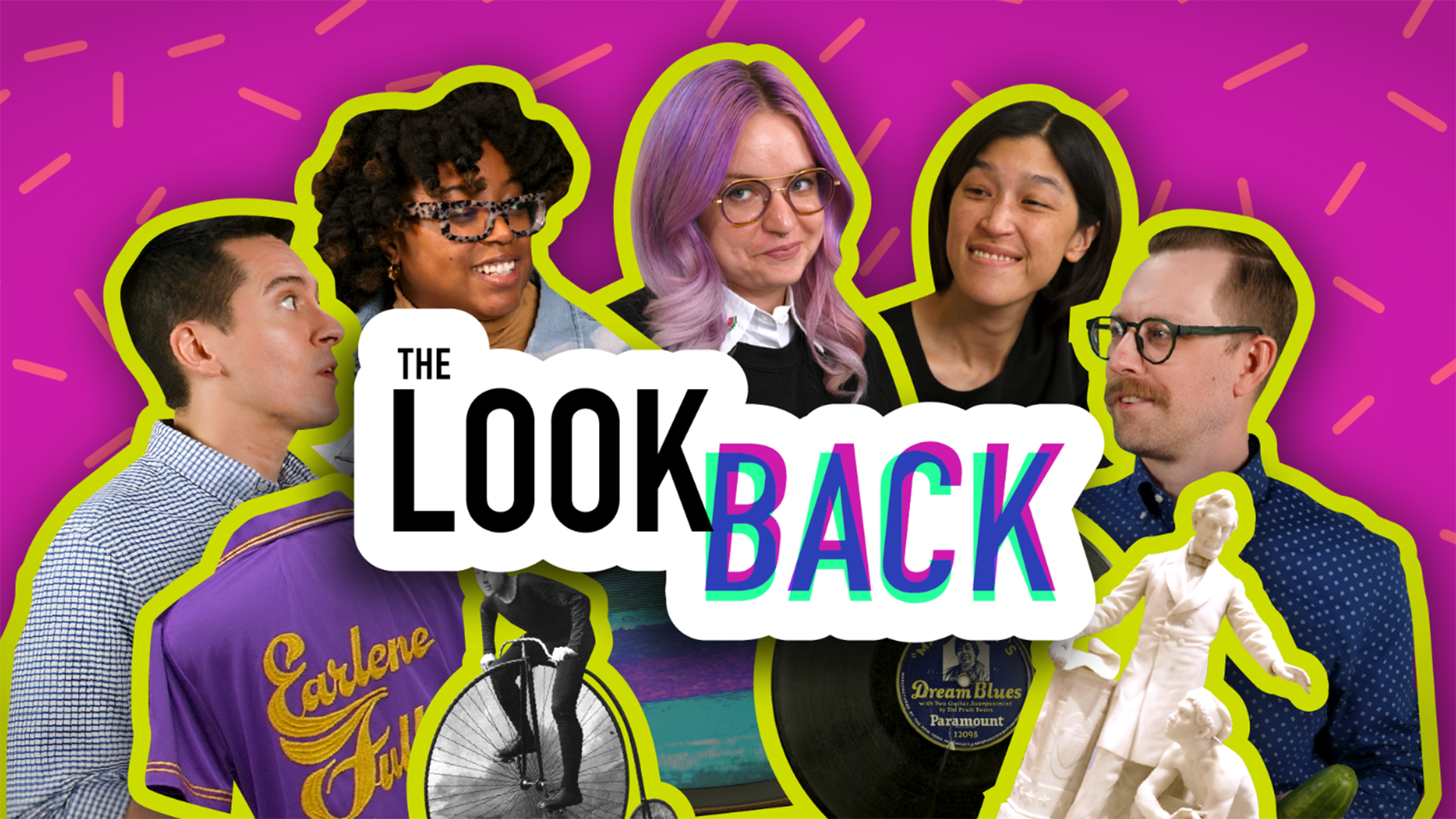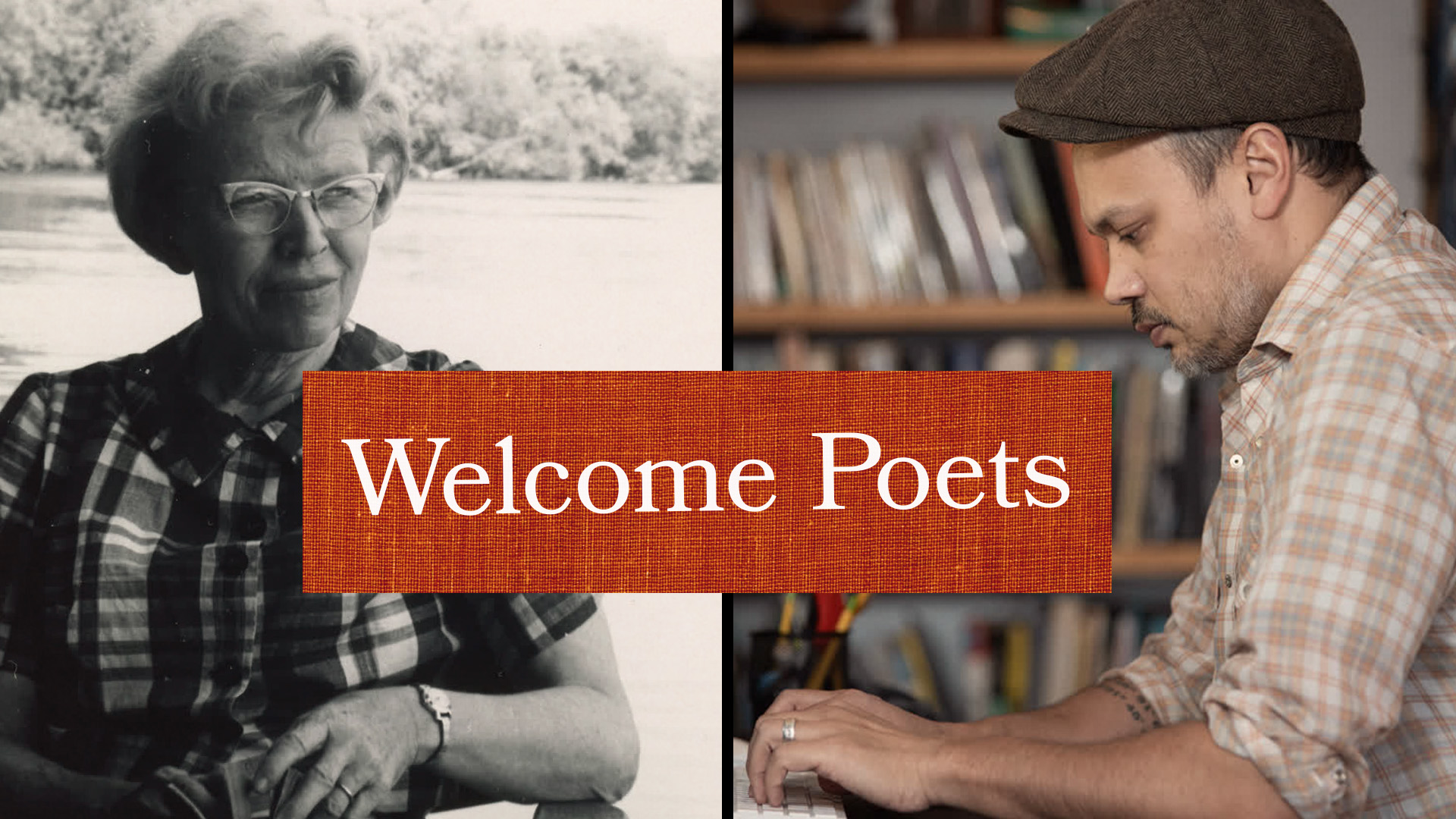Joe Kapler: It really speaks to how popular George Washington still was over 50 years since he was president.
[upbeat music]
Nick Hoffman: Taylor, are you almost done? I’ve been holding this pose for a really long time.
Taylor Bailey: I just have a couple more finishing touches.
Nick: Are you capturing my noble bearing? I’ve been told I have a very noble bearing.
Taylor: Okay, sit still, or I’m not gonna be able to capture anything. All right, I’m all done!
Nick: I can’t wait to see my very own artistic portrait. [fanfare]
Taylor: Ta-da!
Nick: Whoa, that looks nothing like me.
Taylor: Well, to be fair, you asked for a portrait, not your portrait, so I drew a portrait of our first president, George Washington.
Nick: You had me sit still for three hours?
Taylor: It was the only way I could get you to be quiet so I could focus. And I really wanted to draw a portrait based off of the most famous portrait of George Washington.
Nick: Really?
Taylor: Yes. And if you come with me to the historical society, I could show you just how famous it is.
Nick: Hey, wait a minute, I recognize this guy. Take a look at this.
Taylor: Ohh.
Joe: This painting is a copy of a very famous painting that was first done in 1796. So Gilbert Stuart, he painted this scene from life and then made all kinds of copies in the 1790s and the 1800s. And then many other artists later made copies of that same painting, including the artist of this painting that we’re seeing right here, Thomas Sully, almost 60 years after the original. That’s how popular this image of the first president was.
Nick: The Wisconsin Historical Society painting is a copy of the most famous image of George Washington. That painting was done in 1796 by the artist Gilbert Stuart. Stuart painted Washington from life three times during the period from 1795 to 1796. This was toward the end of Washington’s second and final term as president. The second of these paintings ultimately resulted in this portrait. It is arguably the most famous and recognizable image of any figure from American history. It’s sometimes called the Athenaeum Portrait, because for many years, it was owned by the Boston Athenaeum Library. Lots of artists made copies of Stuart’s paintings over the years, including Thomas Sully, who painted the one in the historical society.
Taylor: How did it end up in Wisconsin?
Joe: That’s a great question, Taylor. How did a painting of George Washington from 1854 get to Wisconsin? The Wisconsin Historical Society was founded just before Wisconsin became a state, and started collecting letters and other documents and some objects and some art. But in the 1850s, they wanted to build an art collection. So when the leaders of the organization got together and said, “Who should we reach out to? “Thomas Sully. “Let’s write him a letter and ask him to make a painting for the Wisconsin Historical Society collection.” And we know this because we have the letter that Thomas Sully wrote back and said, “Thank you for the invitation. “Would you like a copy of the famous Gilbert Stuart portrait of George Washington?” And, of course, the leaders here were very excited. And so, that’s how it got here.
Nick: Thomas Sully was an American artist who became famous as a portrait painter. He was born in England in 1783. When he was nine years old, his family emigrated to the United States in 1792. In his training to become an artist, Sully had several teachers, including Gilbert Stuart for a brief period in 1807 in Boston. By the time Sully painted the Wisconsin Historical Society’s portrait of George Washington, he was the most famous portrait painter in Philadelphia. It was a big deal for the young historical society to get a painting by him.
Nick: So, Joe, why would the historical society be interested in having this painting in the first place?
Joe: What does George Washington have to do with Wisconsin? Well, the Wisconsin Historical Society, from its founding in 1846, has always been thinking about American history and North American history outside of the borders of the state. This fit the mission of the historical society, but it also really speaks to how popular George Washington still was over 50 years since he was president.
Nick: Okay, so we learned that the artist Gilbert Stuart painted a very famous portrait of George Washington in 1796 while he was still president.
Taylor: And we learned that the Wisconsin Historical Society has a copy of that painting made by Thomas Sully in 1854.
Nick: But we also learned that a lot of artists made copies of the Stuart painting. I wonder how we can learn more about Gilbert Stuart and George Washington. Do you have any ideas?
Taylor: Hmm, I think I know someone we can call.
Janine Yorimoto Boldt: Welcome to the Chazen Museum of Art. So we’re here in our study room today where people can come and make an appointment to view art really closely. And I pulled a few portraits and artworks that I thought you might be interested in seeing. This is a portrait from our collection of George Washington. As you’ll see, it looks very similar to the portrait that you just saw with Joe. And that’s because it’s a copy after the same portrait by the artist Gilbert Stuart. And this portrait was widely copied by all kinds of artists. And so, one of the places it ended up was actually in Liverpool, England. In Liverpool, England, there’s a large ceramic factory. And they took this image of Washington and put it on ceramic dishes, jugs, all kinds of objects. And then they sold those objects in the United States because there was a very large demand for images of Washington in the early 19th century. It’s nice evidence of how widely used the Gilbert Stuart image of Washington was.
Nick: So how did Gilbert Stuart’s portrait of Washington become so popular? Part of the reason started with Stuart himself. He made dozens of copies of this painting during his lifetime. But it wasn’t just Stuart who made copies. Lots of artists, both in America and around the world, made copies of this painting in a variety of different media. All of this helped spread the popularity of this image. While there are other paintings and sculptures made of Washington, Stuart’s portrait is by far the most widespread and recognizable. Today, the painting is jointly owned by the Museum of Fine Arts, Boston, and the National Portrait Gallery in Washington, D.C.
Taylor: What goes into having someone sit down to have their portrait?
Janine: When people wanted to sit down for their portrait, just like we do now, they carefully would select who would paint their image, and then they carefully selected what outfit they would be in, the setting of their portrait. And they did all of this because, at the time, portraits were very expensive. Everything you chose to include in your portrait was supposed to say something about you and record something about you for years and years to come. For someone like Washington, he and the artist who painted him were very careful to choose appropriate clothing and hairstyles to really represent what did it mean to be the first president of the new country called the United States. If you want to see an over-the-top portrait, I brought another one to show you. So this is King Louis XIV of France.
Nick: Yeah, this person’s extra. [all laughing] Is that right?
Taylor: Yes. [all laughing]
Nick: Yeah? Good, okay.
Janine: If you have to ask…
Nick: Yeah.
Taylor: No, it is really extra.
Janine: This is a great example of a type of portrait that the European kings were having done of themselves, because they wanted to show off not just their fabulous wealth, but their absolute power. He’s got really expensive robes and clothes on. His crown, a scepter. All these symbols of sort of wealth and the monarchy. And if you compare it to the Gilbert Stuart portrait of George Washington, they’re totally different. Right, George Washington’s image is very plain. And that was done on purpose. He wanted to be seen as of the people and not as a monarch. I also brought a contemporary work of art for you guys to look at today that includes Washington’s image. What we’re looking at is a collage by the artist Della Wells, showing two young girls in this sort of fantasy land. The artist also incorporated three images of George Washington that are based off of that Gilbert Stuart portrait that we’ve been talking about. Here, she’s using him as kind of a symbol of American history.
Nick: So we’ve seen portraits of Washington all the way back from the time when he was living, up to the present. In the middle of that, in the 1850s, how has his image and likeness changed, and what did that mean?
Janine: By the 1850s, Washington was firmly iconic, and most Americans had agreed on what his image could be, and that it was just supposed to be an image of the Founding Father, that he could be a shared image of America at a time where people were very, very divided, right? There were increasing political divisions between the North and South, for instance. And he became a figure around whom all Americans could unite.
Taylor: When the Wisconsin Historical Society commissioned their copy of George Washington’s portrait, this image of him had already become iconic. It’s probably the most famous image of an American in our nation’s history. Since then, Washington’s portrait has continued to spread in other works of art, in movies, ads, and of course, on our dollar bill. What are some other famous images of Americans you can think of? Now, what about people we don’t have portraits of? Why are some people represented in portraits and images from history, while others aren’t? Thinking about these questions is exactly what historians do when they consider all the people who make up our nation’s history. It’s a reminder that, while a picture may be worth a thousand words, it almost never tells the full story.
Nick: I’ve been told I’m very noble. [Taylor laughing]
Taylor: Is that in the script?
Nick: It’s something like that. [Taylor laughing]
Nick: Fine, you got me. [whispering] Went off script again. But I didn’t know how to feel! It was awkward. [Taylor laughing]
Search Episodes

Donate to sign up. Activate and sign in to Passport. It's that easy to help PBS Wisconsin serve your community through media that educates, inspires, and entertains.
Make your membership gift today
Only for new users: Activate Passport using your code or email address
Already a member?
Look up my account
Need some help? Go to FAQ or visit PBS Passport Help
Need help accessing PBS Wisconsin anywhere?

Online Access | Platform & Device Access | Cable or Satellite Access | Over-The-Air Access
Visit Access Guide
Need help accessing PBS Wisconsin anywhere?

Visit Our
Live TV Access Guide
Online AccessPlatform & Device Access
Cable or Satellite Access
Over-The-Air Access
Visit Access Guide
 Passport
Passport






Follow Us